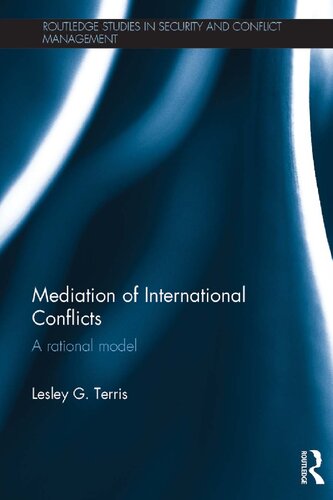

Most ebook files are in PDF format, so you can easily read them using various software such as Foxit Reader or directly on the Google Chrome browser.
Some ebook files are released by publishers in other formats such as .awz, .mobi, .epub, .fb2, etc. You may need to install specific software to read these formats on mobile/PC, such as Calibre.
Please read the tutorial at this link: https://ebookbell.com/faq
We offer FREE conversion to the popular formats you request; however, this may take some time. Therefore, right after payment, please email us, and we will try to provide the service as quickly as possible.
For some exceptional file formats or broken links (if any), please refrain from opening any disputes. Instead, email us first, and we will try to assist within a maximum of 6 hours.
EbookBell Team

5.0
40 reviewsThis book examines the use of third-party mediation as a conflict resolution method.
In an attempt to explain why some, but not all, conflicts are mediated, this work argues that diverse conflict structures are inherently different in their susceptibility to mediation attempts. By offering a systematic method for measuring the transformability of conflict structures, this book contributes to our understanding of the sufficient and necessary conditions for mediation. In addition, the study offers an analytical framework for the examination of mediation as a trilateral rational bargaining process. Although the general concept of mediation as a three-person game is not new, most studies focus on either the disputants' perspectives or the mediator's perspective. In contrast, this study integrates the perspectives of all three parties. The framework links the different stages involved in the whole process of mediation, from the onset of mediation, through the mediation strategies used, to the outcome, rather than focusing on one particular aspect. The book applies the framework to two case studies – the conflict between Israel and Egypt and the conflict between India and Pakistan – and provides new insights into these conflicts from a mediation perspective. In general, the model developed here provides a framework for systematically assessing conflicts and the options available to those involved in the mediation process.
This book will be of much interest to students of conflict resolution, mediation, war and conflict studies, Asian politics, Middle Eastern politics and IR in general.